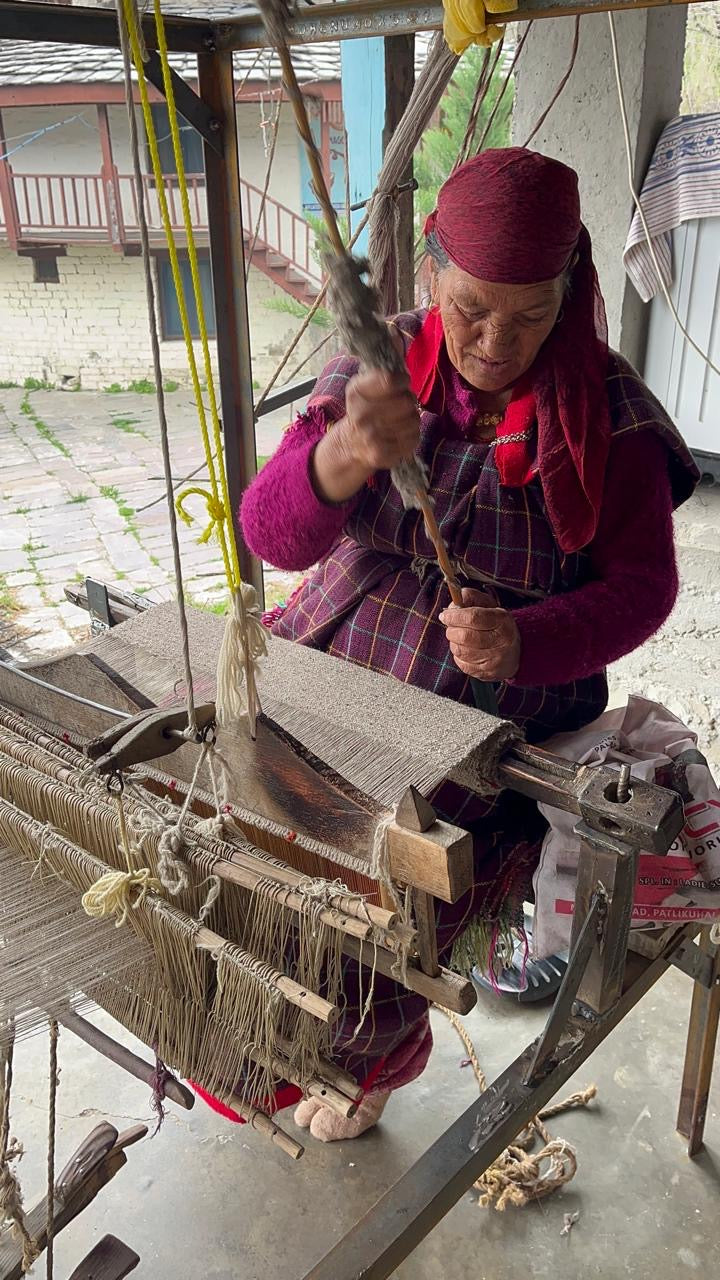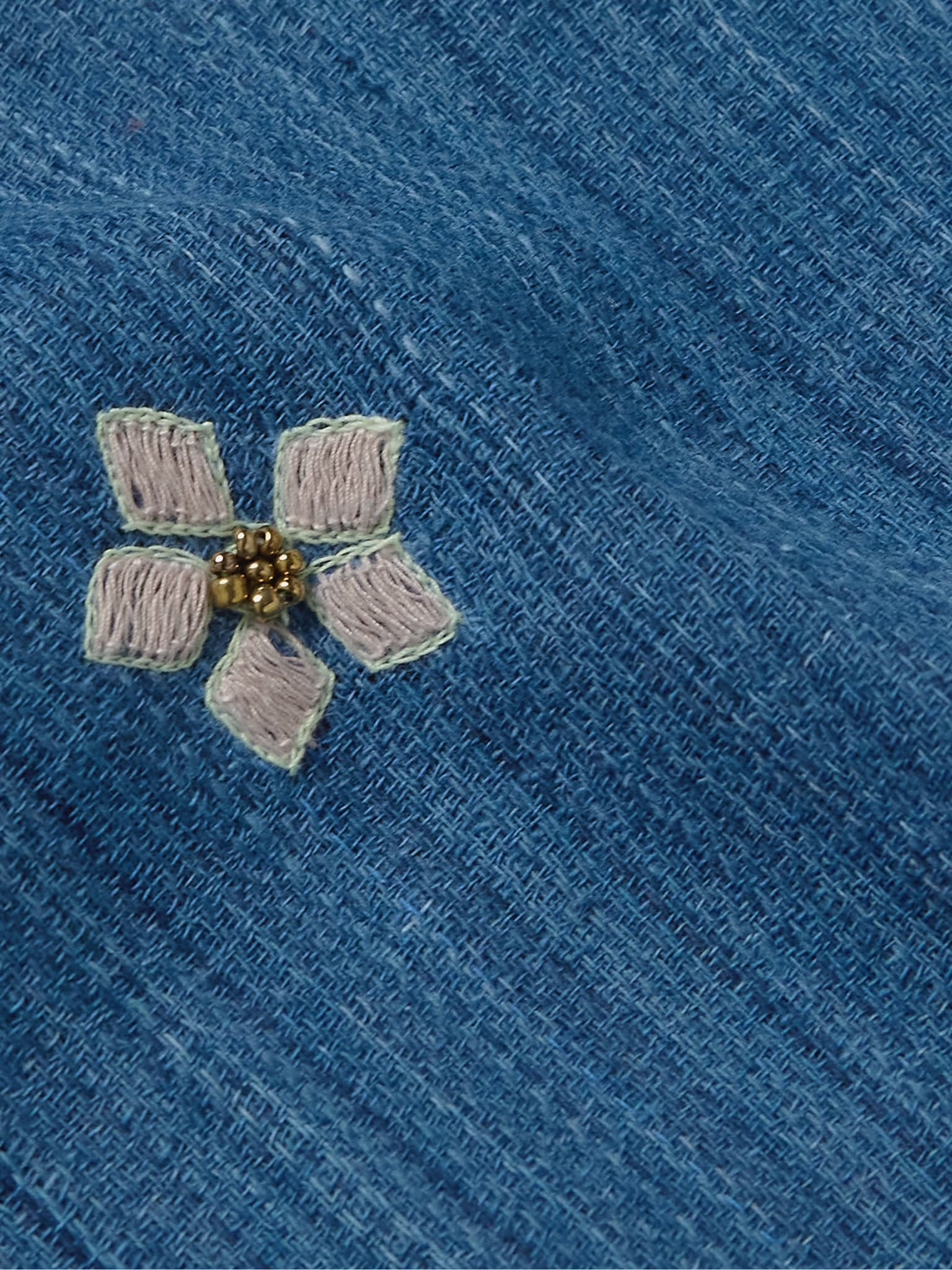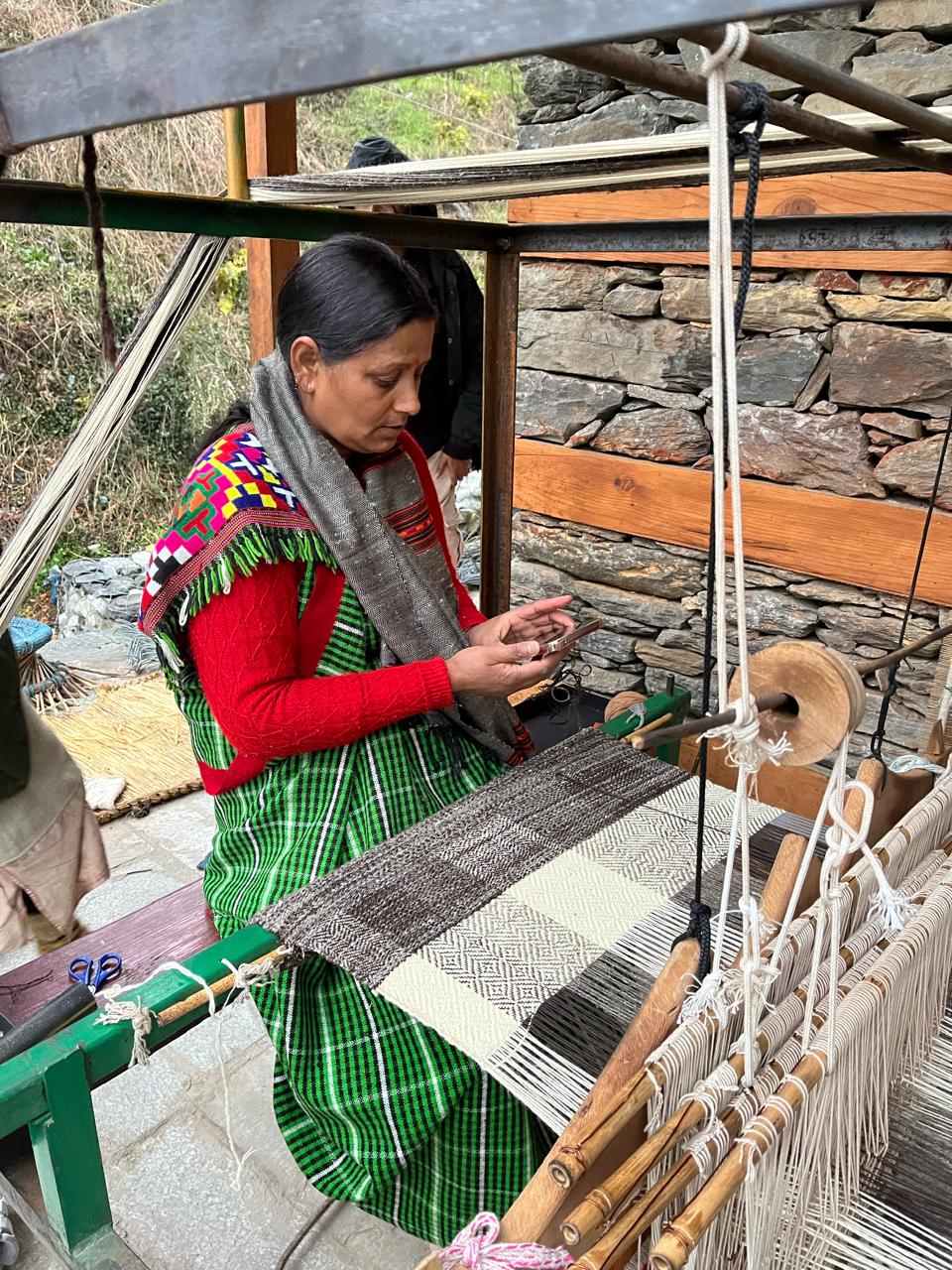4. HANDLOOM WEAVING
Handloom weaving in India holds a profound significance, deeply ingrained in the country's cultural tapestry and economic fabric. Dating back thousands of years, India's handloom tradition is as diverse as its landscapes and communities, with each region boasting its distinctive weaving techniques, motifs, and designs. From the intricate brocades of Varanasi to the vibrant ikats of Telangana and the timeless elegance of Kanchipuram silks, Indian handloom textiles encapsulate centuries of skill, tradition, and heritage. We now work with weavers in over 10 states across the country.
The process of handloom weaving in India is a labor-intensive craft, often passed down through generations within artisan families. It begins with the careful selection of raw materials, including cotton, silk, or wool, sourced from local markets or directly from farmers. Skilled artisans then set up the handloom, meticulously threading the warp and weft yarns to create the fabric's base structure. Using traditional techniques and sometimes intricate jacquard mechanisms, they weave intricate patterns and motifs, often inspired by nature, mythology, or cultural symbolism. Each piece of handwoven fabric is a labor of love, requiring patience, expertise, and attention to detail. It has a natural character and humanness given its process. Beyond its aesthetic appeal, Indian handloom weaving plays a crucial role in supporting rural livelihoods, empowering artisans, helping reduce electricity and preserving traditional craftsmanship in an ever-changing world.





